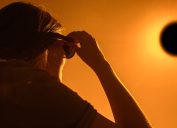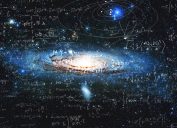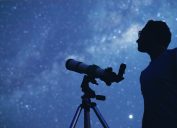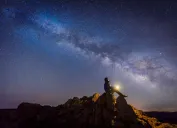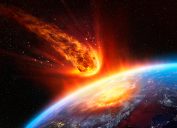Meteor Shower Will Light Up the Sky With "Bright Fireballs" Next Week—How to See It
The impressive Quadrantids will put on a show when they reach their peak.

The night sky is special because it presents a unique opportunity to take in vast amounts of natural beauty from practically anywhere you are. Everything from brightly shining planets to passing comets can put on a show for all of us down here on Earth. But if you want to start 2024 with a memorable sight, you might want to clear your evening calendar over the coming days. That's because a meteor shower will light up the sky next week with "bright fireballs." Read on for more on how you can catch this impressive event.
RELATED: The Next Total Solar Eclipse Will Be the Last Until 2044, NASA Says.
The Quadrantid meteor shower will kick off the new year with a dazzling show.
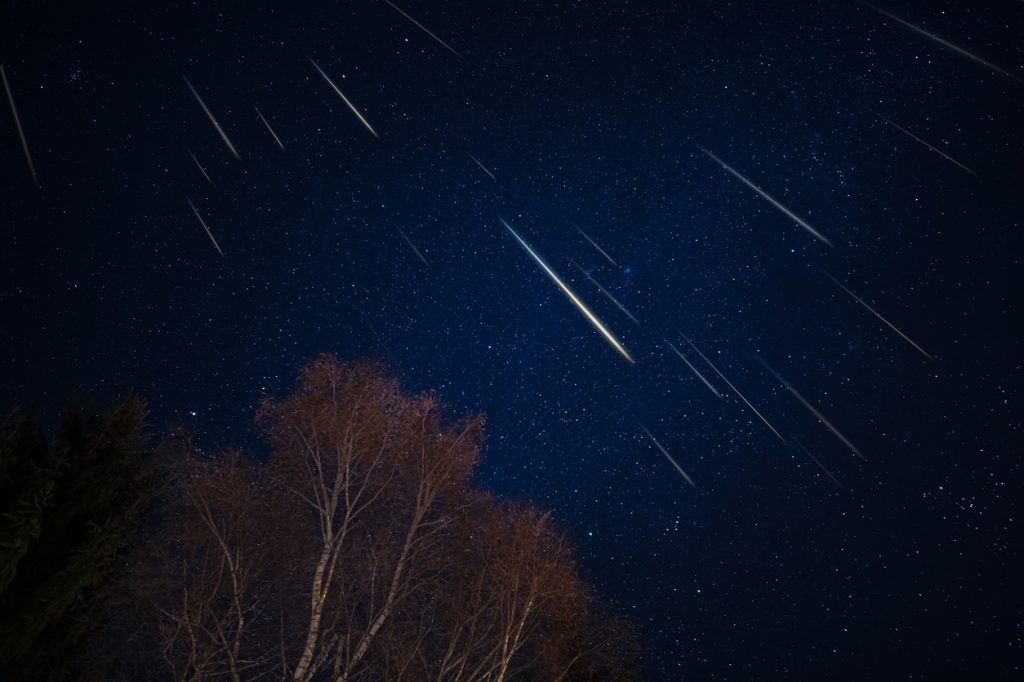
You won't have to wait long into the new year for a major celestial sight. The Quadrantids meteor shower is now underway and will be putting on a show in the night sky over the next few weeks, according to NASA.
Similar to other meteor showers, the Quadtrantids are created by Earth passing through a cosmic debris field. But unlike many other major annual showers born from the dusty remnants of comet tails, these result from a passing asteroid known as 2003 EH1, which orbits the sun once roughly every five and a half years. The small object was only recently discovered in 2003 and measures only about two miles in diameter, per NASA.
Like the Ursids, Gemonids, and Perseids, the Quadrantids also derive their name from their radiant point, which in this case is a constellation known as "Quadrans Muralis." However, unlike the other major showers, this event's namesake is no longer recognized as a celestial body after an update of recognized modern constellations in 1922 did away with the designation. Because of this, the Quadrantids are sometimes also known as the Bootids, thanks to the Bootes constellation that took its place.
RELATED: 6 Stargazing Secrets, According to Astronomy Experts.
The highly active shower is considered by astronomers to be one of the best of the year.
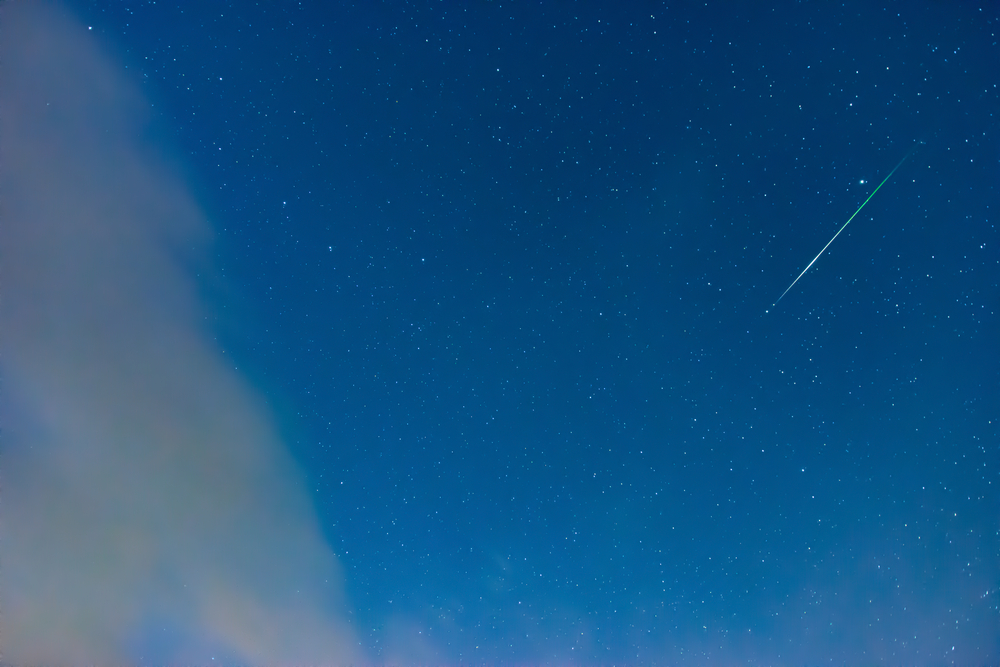
Part of the Quadtrantids' high esteem among astronomers rests in the fact that they tend to start the year off with a bang. The event is considered by many to be "one of the best annual meteor showers," producing 60 to as many as 200 meteors per hour during its peak, according to NASA.
They also tend to look more impressive, too. Since the particles that create them are somewhat larger, Quadrantids tend to produce "bright fireballs" that can linger in the sky much longer than an average streaking meteor.
RELATED: "Devil Comet" With Horns Is Racing Toward Us—Here's When and Where It Arrives.
The Quadrantids will hit their peak late at night next week.
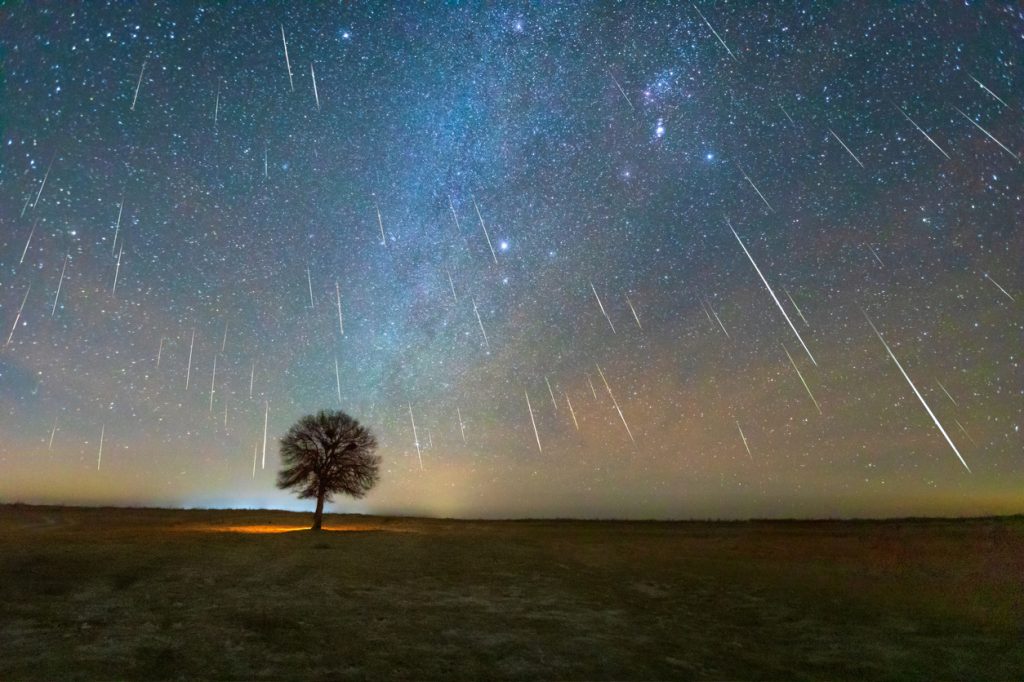
If you're planning on catching the spectacle for yourself, prepare to set aside some time next week for stargazing. The Quadrantids are set to peak on the night of Jan. 3 through the morning of Jan. 4, according to the American Meteor Society (AMS).
But while the meteors have earned a reputation for their brilliance, they're not exactly the most convenient shower to catch in terms of bedtime. Viewers should expect the most activity to occur in the early morning hours of Jan. 4 between 1 a.m. and 5 a.m., per AMS. However, it's best not to put it off: While the meteors will still be visible through Jan. 16, the window for the peak is notably brief due to the Earth's trajectory through the asteroid's debris trail, according to NASA.
Even though clear weather is always ideal for viewing, it's not the only condition that could affect this year's experience. A half-full moon will also rise on the night of the Quadrantids' peak, which could make it harder to see some of the brilliant objects as they light up the sky.
RELATED: Scientists Finally Explain Mysterious Signals From Distant "Hell" Planet.
Here are a few other pointers for making the best out of your stargazing experience.

Getting a good view of the Quadtrantids shouldn't be too hard for people in the Northern Hemisphere. But for the best chance at seeing as many as possible, find a location that's far from city and street lights that could drown out the meteors, NASA suggests.
If you're worried about the moon drowning out your view, there's still a way to protect your eyes from the glare. According to AMS, finding a spot with a tree or building that blocks it out and looking to the north can help.
And while it's always important to prepare for the elements while stargazing, frigid winter weather makes proper planning all the more critical. Dress warmly and bring along a sleeping back or blanket that will allow you to stay toasty while reclining on your back to take in as much of the sky as possible, NASA suggests. You should also give yourself as many as 30 minutes for your eyes to adjust to the dark.
RELATED: For more up-to-date information, sign up for our daily newsletter.
- Source: NASA: Quadrantids



